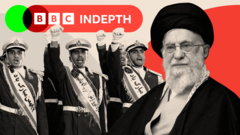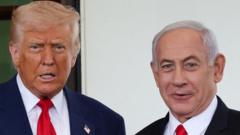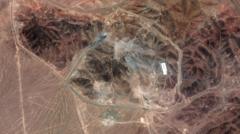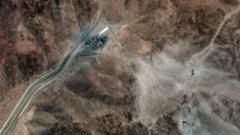Following weeks of conflict with Israel and concerns for his safety, Iran's Supreme Leader must navigate a fragile ceasefire and a weakened nation grappling with discontent and the unraveling of his authority.**
Iran's Supreme Leader Faces New Realities After Bunker Retreat**

Iran's Supreme Leader Faces New Realities After Bunker Retreat**
Ayatollah Khamenei emerges from hiding into a landscape of destruction amid dissent and potential regime change.**
After nearly two weeks in a secret bunker during the ongoing war with Israel, Iran's Supreme Leader Ayatollah Ali Khamenei, now 86, faces a dramatically altered landscape upon his anticipated emergence. The ceasefire brokered by US President Donald Trump and the Emir of Qatar provides a temporary respite, but Khamenei's fear of assassination by Israel remains palpable, leaving him cut off from critical communication, even with his senior officials.
The aerial bombardments have devastated Iran's military infrastructure, particularly impacting the airspace dominance previously held. As a result, the country's military capability has been considerably weakened, provoking serious questioning of the regime's strategic decisions, especially Khamenei's longstanding ideological objectives against Israel—a stance many Iranians no longer endorse. Observers indicate that the aftermath of the war could mark a pivotal phase for Khamenei's leadership, potentially signaling the decline of his long-standing authority since 1989.
The internal climate within Iran appears to be fraught with dissent, as even former regime figures have reportedly urged for interventions from influential religious leaders in Qom to initiate a transition of power. Many Iranians express deep-rooted frustration with the regime, which they hold accountable for their country's suffering, bringing forth a struggle between national pride and disillusionment with the ruling authority.
Despite the backdrop of recent conflict, instances of civilian solidarity have emerged, with communities uniting to support those displaced by the hostilities. Yet this camaraderie contrasts sharply with the pervasive fear of an increasingly oppressive regime, evidenced by recent state actions, including allegations of espionage and widespread arrests of dissenters.
Rising economic strife, exacerbated by sanctions and military expenditures, raises questions about the regime's future viability. Experts suggest that Khamenei's continuation as the Supreme Leader may be under threat from within and from a populace yearning for change. The sentiment against foreign-imposed regime change is coupled with hopes for domestic leadership transformations that reflect popular will.
Yet, external concerns regarding Iran's capacity to advance its nuclear ambitions persist, especially following missile strikes that have exposed vulnerabilities in its defenses while potentially solidifying its resolve to covertly pursue nuclear capabilities.
As Khamenei prepares to navigate this precarious moment, he may contemplate a transition plan to preserve regime stability through potential successors. The depth of dissent and the resilience of the Iranian people indicate that the road ahead may lead to further upheaval, regardless of the fragile ceasefire, raising concerns about both internal socio-political dynamics and the regional balance of power.





















